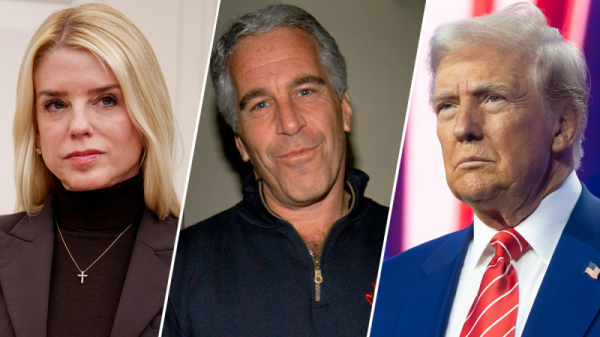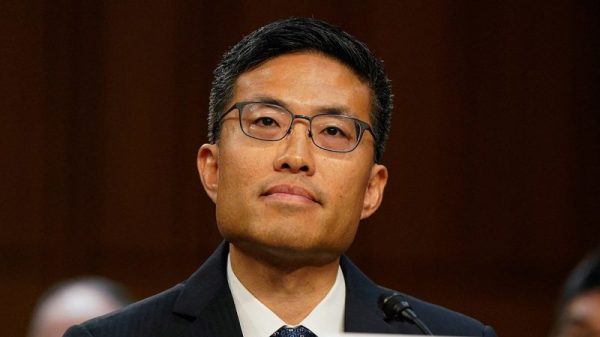Table of Contents
Introduction
Prolegomena To Any Future Federalism That Will Be Able To Present Itself As Such
The Necessary Conditions of All Possible Experience of Competitive Federalism
Cartels at Every Level
Against Perpetual Peace (Among the States): The Supreme Court’s Federalism, So-Called
Energy in the Executive, and the Court
Conclusion
References
Download the Explainer
Introduction
Some three decades ago, Federalism! resonated in demands for congressional term limits, restrictions on Congress’s commerce powers, and support for the Supreme Court’s state-protective jurisprudence. Those days are long gone. The conservative agenda has shifted; its more libertarian contingents have devoted themselves to the project of re-limiting a centralized, sprawling “administrative state.” Still, federalism remains a fixed star in our constitutional firmament. States remain the default setting of American politics, from federal elections to the nuts and bolts of day-to-day politics and administration. There are reasons to be cautiously optimistic about a rejuvenated federalism—provided one understands federalism properly, and provided key institutional players discern the opportunities.
Federalism is a “they,” not an “it.” Good federalism is competitive federalism. It compels junior governments—states—to, well, compete for the talents, affections, and assets of mobile citizens. Consumers and producers can sort themselves into jurisdictions that provide an attractive mix of amenities and public services at an acceptable tax price. Call it preference satisfaction: more people get more of what they like. Successful state experiments may induce others to follow; the dispersion of state school choice policies over the past decade may be an example of such “yardstick competition.” Finally, the fear of losing productive firms and citizens may help to discipline spendthrift, overregulating state governments.
Competitive federalism’s antithesis is “cooperative federalism,” which envisions the states and the central government not as rival power centers but as partners in a collective enterprise. That enterprise is the production of a social-democratic model, characterized by high transfer payments, copious social services, and an ample supply of environmental amenities, nowadays mostly related to climate policy. I have described this arrangement as “cartel federalism,” the better to capture “cooperative” federalism’s central institutional dynamic: to wit, the displacement of institutional competition with the production and distribution of rents among politicians, bureaucrats, and concentrated industry sectors.
Competition among governments resembles competition in private markets in this respect: most producers loathe it. State governments that try to satisfy a high demand for redistributive policies also run a high risk of out-migration. To curb the flight risk, they collude and induce the federal government to suppress competition on important margins and, ideally, all of them. Barring unusual political conditions (about which more below), those state demands meet with ready supply by Congress. Witness federal labor protections, workplace safety rules, and “cooperative” arrangements from Medicaid to the Clean Air Act. It is a common but bad mistake to label those exertions as nationalist impositions on the pitiful states. They are mostly demand-driven by states—more precisely, their political elites.
In earlier writings, ranging from my academic tome, The Upside-Down Constitution to a Mercatus Center booklet titled Federalism and Constitution: Competition versus Cartels to more journalistic entries such as a recent National Review essay “How the Roberts Court Mangles Federalism” I have argued (not very originally) that competitive federalism has numerous advantages if you put a premium on living in a reasonably free and prosperous society. More controversially, I have tried to show that our Constitution facilitates (and, rightly understood, nearly commands) competitive federalism. This essay connects the dots in the contemporary federalism landscape and touches on high-toned law and economics jazz to shed light on competitive federalism’s present condition and prospects.
Those “dots” lie in plain sight: the ruinous state of our public finance; the raging contentions between “red” and “blue” states; the grim brawl over “climate policies” that have no prospect of reducing global temperatures by a single degree; and the federal courts’ increasingly prominent role, which they have yet to comprehend. This all hangs together in a way that should encourage federalism’s true friends.
Prolegomena To Any Future Federalism That Will Be Able To Present Itself As Such
In a widely cited article, Stanford economist Barry R. Weingast identified the parameters of competitive, “market-preserving” federalism:
States underneath a central government possess sufficient institutional authority and integrity to engage in political and economic competition over “some range” of fiscal, labor, educational, environmental, and other salient policies. States have autonomy over conduct within their jurisdiction, provided (a) they permit free entry and exit and (b) their activities do not cause excessive externalities. Enforcement of these conditions is entrusted to the central government. Competitive federalism requires limits on federal transfer payments made to subordinate governments.[1]Look at this list, and then our federalism: your heart sinks. Formally at least, the powers of Congress reach into every nook and cranny of daily life. States’ autonomy has been severely limited and compromised. “Cooperative” federalism dominates in most domestic policy arenas: education, disaster relief, and health care, to name a few of the more significant pieces. These federal-state arrangements appear immune to any serious reform effort.
Federal transfer payments to state and local governments are hardly “limited.” In 2023, they equaled $1.1 trillion, or roughly 18 percent of all federal outlays. A small share ($48 billion) pays for roads and other pieces of our crumbling infrastructure. In contrast, Medicaid accounts for 56 percent of transfer payments ($616 billion). The program has grown by leaps and bounds over the past quarter-century—first, because of the Patient Protection and Affordable Care Act (ACA); more recently, through “emergency” Covid funding. Toss in $167 billion for various forms of “income security”: the overwhelming portion of federal payments bankroll current consumption and straight-up income transfers to state budgets. Worse, the programs have become increasingly debt-financed.
Federal transfers and conditional funding programs have proven to be the Achilles heel of competitive (constitutional) federalism for a full century. The programs erode state autonomy. They create fiscal illusions, inflate the demand for public services, and produce bloated intergovernmental bureaucracies with powerful interest group support. (Federal education funds benefit students only incidentally. Mostly, they inure to the benefit of the National Education Association.) Persuasive critiques of this regime have come from many quarters, including the first Reagan Administration. Yet meaningful reforms have failed to materialize, and the programs have continued to grow.
However, things look substantially better concerning points (1) and (2). States, Weingast et al write, must have sufficient autonomy to compete over some range of policies. “Competitive federalism” is a question of more or less. At one end, we do not want or permit state competition over the basic attributes of equal citizenship. Conversely, no central government can erase state competition on every margin.
How wide, then, is the range? By international comparisons, American federalism is still among the most competitive in the world, alongside Switzerland. States compete vigorously. At least, their political leaders think so. Not long ago, Florida Governor Ron DeSantis and California Governor Gavin Newsom—back then, still presidential aspirants; since replaced by candidates from those two states—engaged in a highly publicized debate over their states’ social and economic models. Think tanks and trade associations rank states on numerous metrics—business, climate, housing affordability, and even religious liberty.[2] The copious supply suggests a demand.
The Necessary Conditions of All Possible Experience of Competitive Federalism
Prospectively, the question is whether competitive federalism’s range will expand or contract. As a rule, you want to bet on its erosion. Specifying competitive federalism’s formal conditions is easy; sustaining them over time is fiendishly hard. Try locking political elites into a regime that disciplines and constrains them: over time, they will figure out a way to establish cartels. State cartels, moreover, have a crucial advantage over private producer cartels: they are represented, via their states’ delegations in Congress, in the central government that organizes the requisite transfers and prevents defections. Thus, competitive federalism can thrive only under unusual political conditions.
The most crucial condition is enough states that cannot be bamboozled or bribed into cartel arrangements. They must stand firm against blandishments, on matters they deem of existential interest to their internal governance. The divide need not be fifty-fifty. Given the legislative hurdles to enacting a federal law, there must be enough states to block cartelization.
Tragically, the issue that kept federalism competitive through the antebellum era was slavery. There could not be a Commerce Clause so broad as to permit Congress to govern that most “internal” of state affairs, and the idea of bribing states into a slavery-but-not-too-much-of-it cartel was too absurd to have occurred to anyone. Compartmentalizing the intractable issue along state lines was the only path.
Slavery is mercifully long gone—not because of some federalism compromise but of Grant v. Lee. But history offers other, less harrowing examples of competition-protective political constellations. Early twentieth-century federal prohibitions against child labor, for example, were an attempt by progressive states to wipe out the advantages of producers in less regulation-minded states. (All states already had child labor prohibitions at the time, though not as strict as the federal statute.) After the Supreme Court invalidated the federal statute in Hammer v. Dagenhart, 1918, efforts to establish a uniform national standard foundered on the opposition of some 16 states—at the time, enough to block even proposed constitutional amendments. Not until 1938 did child labor prohibitions appear in a federal statute (the Fair Labor Standards Act). By then, child labor had effectively disappeared (except on farms—which, sure enough, were exempted from those provisions of the FLSA).
Today’s political environment, too, features a stable, cohesive bloc of pro-competitive and uniformly “red” states, led by Texas and Florida. Their business model rests on low taxes, a relatively permissive regulatory environment, and (crucially, we’ll see) affordable energy. “Blue” states, led by California, New York, Illinois, and Massachusetts, champion an opposed, social-democratic model.
Intense competition between these two blocs manifests itself in a high degree of out-migration of capital and labor from blue to red states. Texas and Florida have experienced substantial in-migration, especially for high-income earners. Disproportionately, those folks come from California, New York, and Illinois.[3]
All this is known even to casual observers of American politics. Still, the sectional divide among the states features several underappreciated aspects worthy of note.
First, while there are reasons to lament the polarization of our politics, it has made competitive federalism more salient and resilient. Red states deem their advantages nonnegotiable, and they cannot be bribed or cajoled into federal schemes that they view as a threat to their business model. To this day, for example, ten states have resisted the considerable temptation to participate in the ACA’s Medicaid expansion.
Second, the regional divide between the states resembles that of the Gilded Age: anti-cartel states mostly in the South; pro-cartel states (New York, Massachusetts, Illinois) mostly in the North, now joined by California. Back then, however, the backward Southern states were the periphery of the American economy, that was dominated by the industrial and financial powerhouses in the North. Now, as noted, many of those same states are the most dynamic, fastest-growing jurisdictions, while blue states are bleeding businesses, well-to-do citizens, and congressional seats. In that crucial respect, competitive federalism is alive and well. It belongs to the winners.
Third, competitive policies tend to come in clusters. A typical low-tax state will also feature right-to-work laws, policies that support cheap and abundant energy, and a business-friendly environment. (It will also tend to resist “wokeness” and identity politics.) While no citizen or business will migrate to a red state for any individual policy reason, everything happens on the margin; when many advantages come in a package, they do matter.
Conversely, pro-competitive states will view even incremental federal impositions as threats to their business model. For example, these states have resisted the National Labor Relations Board’s initiatives to re-classify large cohorts of workers and contractors as “employees” along with extending the reach of federal labor law in other ways. Those controversies between unions and employers have a pronounced federalism dimension. California wants a high minimum wage and other dubious entitlements and therefore demands them as a floor for the nation. Texas et al predictably resists California Uber Alles initiatives.
Fourth, the institutional forum matters. Outcomes differ when disputes are fought in Congress, administrative agencies, or courts. To be sure: Congress still exercises powers with profound federalism implications. An important example is the $10,000 cap on the state and local income tax deduction (“SALT”) enacted in the early days of the Trump Administration. That reform increased competitive pressures on high-tax states with large numbers of wealthy and high-income households. Almost surely, it hastened the exodus of high-income earners from those states. The SALT cap is scheduled to expire in 2025. The timing promises a major congressional brawl in the first year of the incoming administration.
Increasingly, however, the decisive federalism arena is a set of constitutionally unprovided-for actors—to wit, administrative agencies. As Yale Professor Abbe Gluck put it once, federalism’s contours were shaped by the Constitution, principally meaning the federal judiciary.[4] Then, federalism came from Congress. State bargains were haggled out in bipartisan committees whose members often had more in common with one another than with the rest of their parties. Now, the federalism arena is dominated by the Executive, under statutes that delegate vast regulatory and fiscal powers to administrative agencies.
An administrative government is a presidential, White-House-directed government. Thus, the exercise of regulatory power and the distribution of trillions of federal funds will be shaped by partisan calculations. The calculus will not always benefit states that are governed by the sitting President’s party. Especially in election years, federal funds and regulatory forbearance tend to be directed disproportionately at swing states that are within reach of the President’s party. Substantive policy objectives, too, may prompt a political “misdirection” of federal funds or regulatory demands. In the early years of the ACA’s implementation, for example, the Obama Administration’s HHS officials trolled the country and offered ever-more generous financial and regulatory terms to red-state officials, to persuade the laggard states to participate in the ACA’s Medicaid expansion. Similarly, the panoply of “green” boondoggles authorized by the Biden Administration’s Inflation Reduction [sic] Act may wind up disproportionately in red states, most of which still allow industrial facilities to be permitted and built within reasonable time. That said: under present conditions, competitive federalism is itself a partisan issue. Given the Executive’s dominance over federalism relations, that is the arena where the contentions will be fought.
And that, in turn, entails that many federalism disputes will return to the institutional arena where the Founders chiefly housed them and where its contours were defined for much of our history: the federal courts. Over the past three-plus decades, just about every significant federal regulatory initiative has been subject to judicial intervention, often at the instigation of coalitions formed by state Attorneys General. Federal immigration policies, student loans, Covid policies, and environmental and energy policies have all been challenged by one state bloc or another.[5] And “bloc” is just the right word. Bipartisan litigation is a rarity. The state AG coalitions are grimly partisan, and they have remained remarkably stable.
With great regularity, the cases have ended up on the Supreme Court’s doorstep. Curiously, though, the Court has shown no comprehension of the federalism dynamics, nor for that matter its own central role. Understanding this perplexity requires a bit of political economy and historical context, and an excursion into the New Deal’s lasting, lamentable legacy.
Cartels at Every Level
Federalism requires robust constitutional safeguards, not simply against federal overreach but also and perhaps more so in federalism’s “horizontal,” state-to-state dimension. Any federal order will pose countless conflicts and coordination problems between and among states. There should be rules for such disputes.
Those rules can be supportive of state competition, or not. Most federal constitutions, for example, allocate tax revenues between the central government and the subordinate entities and then mandate a redistribution of funds from rich states to poor states. That is a constitutionally mandated cartel arrangement. Our unwritten New Deal Constitution enshrines a similar arrangement in the form of conditional funding statutes that put vast sums in the hands of state-level bureaucracies and are now unreformable. Our written Constitution, in contrast, contains nothing of the kind. Instead, it teems with pro-competitive federalism provisions.
Competitive, “market-preserving federalism” requires free exit and entry between states. That’s the Privileges and Immunities Clause (Article IV Section 2— “the cornerstone of the union,” in Alexander Hamilton’s estimation). The Constitution contains additional (qualified or categorical) prohibitions against state imposts and duties, interstate compacts, and laws impairing the obligation of contract (Article I Section 10). States must give “full faith and credit” to each other’s records, proceedings, and public acts (Article IV Section 1).From that general structure, one can readily infer another precept: equal states must have authority to govern their citizens and territory, not sister states’. The guiding principles are free entry and exit; non-discrimination; non-aggression; and comity.
Per Weingast, those conditions must be enforced “by the central government.” Which branch, though—the political branches, or the federal courts?
Legislative coordination will almost invariably proceed on terms European lawyers call “positive harmonization,” meaning a uniform or minimum standard across jurisdictions—distinct from neutral, market-preserving rules. Federal legislatures anywhere in the world are abysmal even at deciding what should belong to the central government and what should belong to the local governments. They are almost entirely incapable of deciding what belongs to which state—in other words, to make rules that delineate equal states’ jurisdictions vis-a-vis each other, on neutral, “market-preserving” terms. Any set of such rules will produce losers and winners, and the losers will demand protection or compensation—a “harmonizing” baseline for labor law, environmental standards, and countless other matters across the country.
Judicial coordination, in contrast, will invariably proceed on “negative,” market-preserving terms. The courts’ sheer lack of institutional capacity prevents them from conjuring up and enforcing harmonizing standards. They can, however, break down barriers to competition.
This holds across a wide variety of federal arrangements. In the 1960s and 1970s, for example, the European Union project was floundering. The Court of Justice of the European Union (CJEU, then still the ECJ) took it upon itself to produce an “ever closer union” by breaking down member-states’ protectionist barriers. For a time, the ECJ jurisprudence generated a much freer, more common, and competitive market. The interlude lasted for roughly a decade until the European Commission (EC) increased its capacity and produced what Margaret Thatcher, in a terrific put-down of EC President Jacques Delors, called “harmonization through the back Delors.”
American history offers much the same lesson. Throughout the nineteenth century, the Supreme Court was the chief engine of economic integration. It broke down state trade barriers to interstate commerce. The Court’s principal tools were now-discredited doctrines: the dormant Commerce Clause, and federal general common law.
In the early decades of the twentieth century, though, Congress took over. In the New Deal era, the Supreme Court officially ceded the field. In pathbreaking decisions such as Wickard v. Filburn (1943) and Yakus v. United States (1944), the Court vastly expanded the powers of Congress and administrative agencies over the nation’s economy. At the same time, decisions from Erie Railroad (1938) to International Shoe (1943) vastly expanded the states’ powers to govern transactions in interstate commerce without fear of federal judicial reprobation. The constitutional barriers were flattened, and the road was paved for unchecked cartel federalism of conditional funding programs and federal minimum standards.
For some three decades, this worked tolerably well. As already noted, federalism compromises were haggled out in Congress, by bipartisan committees that in turn closely supervised “their” executive agencies. Under their watchful eyes, the Federal Communications Commission administered the “Ma Bell” monopoly over long-distance calls, with a proviso to dole out some of the proceeds to local carriers. Congressman Jamie Whitten’s Agriculture Committee ensured that the Ag Department would cast a benign glance, if any, at state-sponsored cartels from Florida’s sugar producers to California’s Sunkist. Federal transfer payments greased some of those deals, but those payments remained limited (by modern standards) and chiefly funded infrastructure investments, not consumption.
None of this survived the Great Society, the vast expansion of the regulatory state, the inexorable rise of executive, and presidential government, and the partisan polarization of American politics at all levels. The bipartisan committees that once engineered federalism bargains are no more. Many of the cartels have broken, mostly for good. Ma Bell no longer rings except for octogenarians and disco fans. The “Detroit bargain”—domestic automakers’ protections for unions and a de facto exclusion of black labor in exchange for tariffs—is no more.
That form of Congressional mediation among states has been supplanted by various “green” subsidies on the supply side; competition between union and right-to-work states in the production process; and EV mandates on the consumption side. In short, the central “competition versus cartel” question that the New Deal had sought to settle has become fiercely contested between stable blocs of partisan states.
In that environment, one might think (or at any rate hope) that the judiciary would rethink a federalism order inherited from the New Deal, and instead re-assert constitutionally grounded rules to dampen sectarian litigiousness and to keep the states out of each other’s hair. However, the Court has failed to supply a single rule of that kind. In important respects, it has made matters worse. Federalism’s fate largely hangs on the Justices’ escape from self-imposed dogmatism.
Against Perpetual Peace (Among the States): The Supreme Court’s Federalism, So-Called
Consider two landmark decisions of the Court’s 2022-2023 Term. In National Pork Producers v. Ross, a splintered majority upheld a state statute prohibiting the sale of pork products in California unless the animals were raised under conditions deemed sufficiently humane by the state. In the second case, Mallory v. Norfolk Southern, a narrow majority held that any corporation that registers to do business in a state thereby consents to the jurisdiction of that state’s courts even if neither the plaintiff, nor the defendant, nor for that matter the injury, had anything else to do with the state. In the case at bar, a Virginia railroad worker with temporary residence in Ohio sued a Virginia company over injuries sustained in Virginia. Naturally, he sued in Pennsylvania, where the trial lawyers reign and Norfolk Southern is perforce registered to do business.
Both decisions give carte blanche to states that contrive to govern actors and conduct in other states. The Pork Producers theory contends that any state can bar the import of goods from any state with supposedly odious production conditions: a state with or without right-to-work laws, or with or without medical leave for, say, late-term abortions. According to Mallory, any state may establish jurisdiction over any enterprise registered to do business in the state—that is to say, all of them. Both cases permit and incentivize states to “compete” on the least plausible margin: mutual aggression.
Justice Neil Gorsuch wrote both opinions, with an unwarranted snark, a proudly pronounced indifference to practical consequences, and the perennial refrain: If the pork people or the railroad barons don’t like it, they should go to Congress.
Pork Producers and Mallory directly address horizontal federalism questions (respectively, the dormant Commerce Clause and the scope of personal jurisdiction. Very similar questions arise in regulatory and administrative law cases. Administrative law scholars have designated their field “the new federalism,” because practically any comprehensive federal regulatory scheme will have massive distributive consequences between and among states. Often, regulators and state officials know who the winners and losers will be. Again, the Supreme Court’s opinions and decisions show no comprehension of the federalism stakes. The Court bears a great responsibility for helping fuel a “federalism” of mutual state aggression. Energy and environmental cases provide proof.
Energy in the Executive, and the Court
Energy and environmental cases constitute a disproportionate share of multistate litigation. An overwhelming number of those cases arise under and over the Clean Air Act (CAA); of those, the great majority have to do with the regulation of greenhouse gases.
The proximate cause of these contentions is a momentous 2007 decision captioned Massachusetts v. EPA. A 5-4 majority of Justices held that (1) the Commonwealth had “standing” to sue EPA over its failure to address greenhouse gas emissions from automobiles. States, you see, deserve “special solicitude in the standing analysis,” providing them with a right to sue in cases where no private party would have access to a court. The Court held that (2) greenhouse gases could and probably had to be regulated as “pollutants” under the “capacious” definition of the Clean Air Act (CAA).
En route, the majority deployed supposedly state-friendly rhetoric. Poor little Massachusetts could not do anything meaningful about climate change; the least it could expect was for the federal EPA to do its duty. This was and remains a complete and probably willful misunderstanding of federalism’s constitutional architecture and political economy.
A dozen-plus blue states supported Massachusetts. A roughly equal number of states, however, protested the initiative. Those, naturally, were red states, almost all with a large domestic fossil fuel industry and low energy prices. Despite Massachusetts’ artful pleading, the opposing states saw the initiative for what it was: a full-scale attack on the national energy industry and, consequently, producer states’ essential competitive advantage. Massachusetts v. EPA mentioned the inter-state aggression inherent in Massachusetts’ attempt to rope in a federal agency as its handmaid—the actual federalism issue in the case—with not a single word.
On a benign interpretation, the Massachusetts v. EPA Court attempted to cram the climate change question into Congress. (No one at the time thought greenhouse gases could effectively be regulated under a CAA built for conventional pollutants and localized pollution.) However, after the Obama Administration torpedoed a compromise cap-and-trade bill then rattling around in Congress, the carbon wars, unleashed by Massachusetts v. EPA, played out in federal agencies and the courts. The state coalitions have remained stable over the intervening 17 years (and counting). The states continue to litigate every EPA rulemaking on the issue.
Note well the competitive federalism aspects of the carbon wars unleashed by Massachusetts v. EPA. From any realistic environmental perspective, the agitation seems hard to comprehend. Even EPA’s most ambitious initiatives, from various permutations of the “Green Power Plan” to EV mandates, will do practically nothing to stem wildfires or rising sea levels—not a century hence, and surely not here and now.
Elected politicians (including state attorneys general) don’t usually have long time horizons. They do care about near-term calculable payoffs. Political elites in California, New York, or Massachusetts face a high internal demand for environmental amenities, or at any rate, belief satisfaction. Hence come fracking bans, state EV mandates, and other interventions that drive up the cost of energy. Such energy prohibitions immediately concern consumers and those producers who require reliable energy, from data processors to smelters. The only plausible way for “net zero” states to neutralize the attendant competitive and comparative advantages for “drill, baby, drill” states is to raise the price of energy in those states. Antitrust lawyers call that behavior “raising rivals’ costs.” The most viable way of achieving that end is to enlist the support of federal regulatory agencies, from the EPA to the Department of Energy to Federal Energy Regulatory Commission and National Highway Transportation Safety Administration. Et voila: the blue states’ relentless crusade for federally sponsored energy cartels, and the red states’ fierce insistence on protecting their considerable advantages on this vital margin.
Over the years, the Supreme Court has grudgingly corrected course, but only up to a point. “Special solicitude” state standing is probably gone, and some of EPA’s more adventurous maneuvers to engineer a zero-carbon world, or perhaps to make the planet spin westward for a change, have fallen victim to restrictive judicial doctrines. None of that, though, provides much assurance. Once the Supreme Court has declared some interest group theater open, it rarely rings down the curtain. And the play is no fun—not for regulated enterprises who must fear that their long-term investments will be turned into stranded assets by the next administration, and not for production-oriented states.
Conclusion
We face a mixed picture for the recovery of competitive federalism. A rock-solid bloc of pro-competitive states provides the foundation, and a comparison point against the bloated model of hyper-spending and over-regulated states wanting to impose cartel federalism nationwide. Yet, transfer programs will continue to grow; any meaningful reform must await a rip-roaring debt crisis. Competitive federalism’s prospects in the regulatory arena depend now, as they have for some two decades, on the outcome of the next presidential election, and the one after that.
Under any scenario, the Supreme Court will play a prominent role in the (competitive) federalism arena. We can charitably describe the Court’s record as dismaying. On the authority of Pork Producers and Mallory, each state has full authority to exercise universal legislative and judicial jurisdiction over all other states. No obstacles—not even explicit constitutional provisions—stand in the way. That will have to change.
The sensible perspective—and a prompt to suitably inclined political actors and legal entrepreneurs—is to heed Monty Python’s sage advice: Always look on the bright side of life. There is no way but up, and some political actors possess the incentives and the capability to pursue a competitive federalism agenda, with a fair chance of making progress.
By way of timely comparison, the seemingly impregnable “administrative state” had a dismal year in the Court’s just-concluded Term. The Chevron mandate to defer to agencies ended, as did agencies’ authority to adjudicate disputes over private rights. Much as the Supreme Court commentariat chalks this up to judicial appointments, it was foremost a product of a long-term intellectual rethinking among academics, think tanks, policy advocates, and litigators—non-profit law firms, state attorneys general, and occasionally commercial lawyers—who took up those cudgels and, over time, learned how to deploy them.
It may seem odd that so much of federalism’s future may hang on a bunch of lawyers and judges. Then again, America’s federalism, more than any other country’s, has always been a lawyerly province, because we live under a constitution that makes it so. It remains for those jurists to discern contemporary federalism’s favorable background conditions, and to litigate and rule accordingly.
References
[1] Barry Weingast, “The Economic Role of Political Institutions: Market-Preserving Federalism and Economic Development,” The Journal of Law, Economics, and Organization, Volume 11, Issue 1, April 1995, Pages 1–31.
[2] See the US News & World Report ranks for state competitiveness here Rankings: Economy – States With the Best Economies (usnews.com); See also Will Ruger and Jason Sorens’ Freedom in the 50 States: An Index of Economic and Personal Freedom Freedom in the 50 States 2023 | Cato Institute; Climate rankings here https://taxfoundation.org/research/all/state/2024-state-business-tax-climate-index/; housing affordability here https://www.nar.realtor/blogs/economists-outlook/state-to-state-migration-trends-in-2022; and religious liberty here https://lawliberty.org/religious-freedom-in-the-states/?mc_cid=e4f7d717f3&mc_eid=fabd919e4b
[3] See this assessment for understanding how competitive federalism separates winners and losers: https://wirepoints.org/new-2020-irs-migration-data-reveals-which-states-won-and-lost-the-competition-for-people-and-their-wealth-a-wirepoints-50-state-survey/
[4] Abbe R. Gluck, “Our National Federalism,” Yale Law Journal, Vol. 123, No. 6, April 2014.
[5] Marquette Professor Paul Nolette’s website provides a searchable database of multi-state lawsuits against the federal government, all the way back to the Reagan Administration.
Download the ExplainerThe State of Competitive FederalismDownload

































